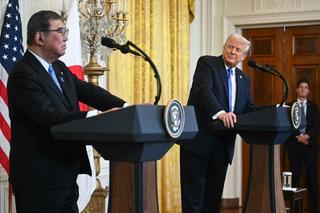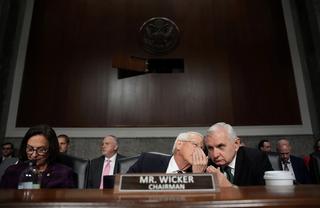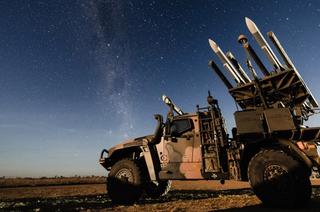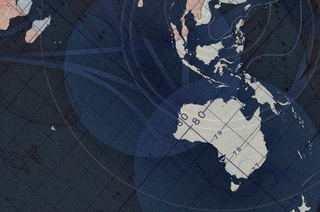The headlines
The general trend over the past two decades — including during the first Trump administration — has been one of increasing integration between the United States and its major allies; to include defence exercises, technology cooperation, forward military posture and intelligence sharing. This integration with the United States has been matched by growing minilateral security cooperation among US allies and partners, to include the US-Australia-Japan-India Quad, the addition of Australia, Japan, Korea and New Zealand (the Indo-Pacific Four) in NATO summits, and the new ‘Squad’ (US, Philippines, Japan and Australia). Though still far short of an ‘Asian NATO’, this emerging collective security architecture has moved far beyond the traditional ‘hub and spokes’ established during the Cold War to what the Biden administration officials began calling a 'latticework’ of regional security arrangements. Donald Trump’s norm-breaking second term has now cast doubt over US alliances, with some predicting allies will pursue greater autonomy or even bandwagon with China. Yet a closer examination of alliance dynamics since Trump’s second inauguration also reveals just how enduring the US alliance system is in terms of both geopolitics and US domestic factors.
President Trump’s ambivalence about alliances has been on display throughout the early days of his second term, though with a sharper focus on Europe than the Indo-Pacific. In March 2025, Trump told reporters in the Oval Office that his administration might not defend NATO allies who were unwilling to pay more for their own defence, and he excluded European partners from his peace-making efforts in the Ukraine war. In unsecured communications over Signal that same month, key members of his national security team decried European free-riding. The administration’s initial defence plans reportedly featured major cuts to US forces in Europe in favour of upgrading capabilities in the Indo-Pacific.
This intensified pressure on NATO stems from three factors: Trumps’s own personal history with President Zelenskyy of Ukraine; a long-standing disdain of Europe on the right wing of Republican politics (where there has been an historic overlap between ‘America First’ isolationism and the hardline ‘Asia First’ movement against communist China); and finally the strategic logic of pivoting US military power from Europe to the Pacific to deal with the pacing threat of China.
What Trump has not done is move to withdraw from NATO or force President Zelenskyy to accept Vladmir Putin’s terms. Nor has Trump threatened to pull troops out of Asia as he did in his 2016 campaign and then again in front of TV cameras during his 2018 summit with North Korean leader Kim Jong Un. Nevertheless, the treatment of NATO allies coupled with the Trump administration’s massive tariffs have shaken US allies everywhere.

What is happening behind the headlines?
Despite Trump’s own mercurial approach to world affairs, the administration’s early moves with allies in the Indo-Pacific have suggested far more continuity than change. In confirmation hearings, Secretary of State Marco Rubio and Secretary of Defence Pete Hegseth emphasised their commitments to US allies. Rubio’s first major diplomatic move was a Quad foreign ministerial on 25 January that reaffirmed the partners' shared commitments to a free and open Indo-Pacific and put greater emphasis on maritime security. Trump’s summit with Japanese Prime Minister Ishiba Shigeru on 7 February featured no fireworks and the two leaders’ joint statement underscored the United States’ “unwavering commitment to the defence of Japan, using its full range of capabilities, including nuclear.” The summit statement also broke new ground in highlighting the US-Japan alliance’s readiness to respond to threats against Taiwan. On his first visit to Asia in March, Secretary Hegseth stressed that the administration would “truly prioritize and shift to this region of the world in a way that is unprecedented. Today, it’s the Philippines. Tomorrow, it’s Japan. It will be Australia and South Korea and other nations in this part of the world.” The Secretary of Defense’s visit highlighted upgrades to the US command structure in Japan, expanded defence deployments and capability-building for the Philippines, and a US$2 billion fund for security engagement in the Pacific.
More broadly, the administration’s 2026 budget proposal would increase defence spending by 13% for the next fiscal year, with a significant shift of resources towards the Indo-Pacific — an increase that enjoys support from the Republican-led Congress. The actual numbers are still unclear, however, and some senior Republicans including Senate Armed Services Committee Chair Roger Wicker, have voiced concern that the administration's actual proposal falls short of the promised $1 trillion defence budget. Whatever the overall increase, Pentagon watchers expect a significant shift of resources to the Indo Pacific from other regional commands.

This continuity on alliances in Asia enjoys US public and Congressional support. In multiple public opinion polls, Americans have expressed strong support for US alliances, and major legislation aimed at strengthening alliances has usually passed in Congress, including the sweeping reforms of export control rules required to implement the AUKUS agreement. The architects of US security policy, including in the new Trump administration, generally recognise that the United States needs allies more rather than less in the face of China’s growing capabilities and ambitions. US forces cannot execute war plans without more distributed access, basing and overflight arrangements given the People’s Liberation Army’s numerical advantage in the Indo-Pacific. Allies like Japan and South Korea are indispensable, not only for geography but also shipbuilding and semiconductor technology needed in the competition for dominance in AI. Australia’s geography is critical as it was in the Second World War. Australia also brings other irreplaceable capabilities in areas such as critical minerals, space and intelligence. No official in the Trump administration has argued that the United States can go it alone against China in the Indo-Pacific, a point even tariff hawks like Robert Lighthizer emphasise.
At the same time, polls show that large majorities of Americans want US allies to pay more for their own defence. The administration is signalling not only in Europe but quietly to Asian allies as well that more defence spending is expected. The difference is that President Trump has thus far not publicly threatened not to defend Asian allies if they do not pay more as he did in his first presidential campaign. The United States spends 3.4% of GDP on defence (and that ratio will likely go up) compared with about 2.8% for South Korea, 1.9% for Australia and a target of 2% for Japan. NATO allies lag further behind with numbers like 1.3% for Canada (the United Kingdom will increase from its current 2.3% of GDP spending rate to 2.5% by 2027).










.jpg?rect=795,0,2010,2400&w=320&h=382&fit=min&auto=format)